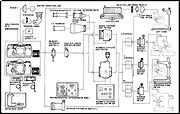Olympus OM PhotoTechnical Group As a leading manufacturer of optical instruments in various fields of modern life, OLYMPUS provided the OM System with a wide variety of phototechnical units many of which can be used to successfully document your valuable achievements in photographs. This group includes a microscope adapter for use with an operation microscope, an astroscope adapter to explore the mysteries of space and stars in conjunction with a telescope, etc. mostly capable of attaching on the OM body.
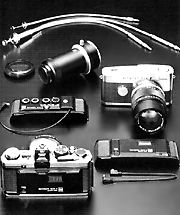 |
Other outstanding advantages of this group are the Recordata Backs 3 and 2 that are interchangeable with the OM standard camera back. Once in place, the No. 3 Back automatically records the date (year-month-day) or the time (day-hourminute) in the lower right hand section of your picture (camera held in the horizontal position) simultaneously with the shutter release.Externally, data can be displayed on the liquid crystal panel. Meanwhile, the No. 2 Back imprints numerical and alphabetical symbols in 4-dial coding on the picture when the exposure is made, of great, convenience in documentation, information filing, instant picture classification, etc. Both Backs can be used for high speed motor drive photography and flash photography. |
For Olympus Pen F and FT enthusiasts, a mount adapter is also available for connection of these cameras to the OM System interchangeable lenses and other units. <<<-- PDF File (80k) |
PhotoTechnical Group Accessories (Other versions of the Olympus Recordata Backs) Important: The current Recordata Back 4 is NOT usable with older OM1 that does not have the databack terminal contact at the back of the body, only tyhe OM1N can be used).
 |
* Recordata Back 3 This unit replaces the standard camera back to automatically record the date (year-month- day) or the time (day-hour-minute) on the film simultaneously with the exposure, or blank as desired. Data display on the liquid crystal panel. |
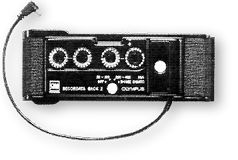 |
* Recordata Back 2 The Back fits on the OM body and imprints data in the lower right corner of the picture. The data comprises numerical and alphabetical symbols for year, month, day or other information in 4-dial coding. |
Can be used for high
speeds sequence photography with the Motor Drive or Winder units, and flash photography.
Imprinting can be prevented, if required by simply setting the selector switch OFF.
 |
* OM-Mount Astroscope Adapter Permits astrophotography by the OM Body attached to telescope by means of the 36.5mm diam., pitch 1mm and pitch 0.75mm threads. It enables direct objective photography and high magnification photography through the telescope eyepiece. |
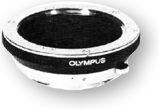 |
* OM-Mount Lens Adapter for Pen F * Connects the OLYMPUS PEN F, FT and FV cameras to the OM System Interchangeable Lenses and other units. |
 |
* Double Cable Release Used with the Auto Bellows. |
Olympus OM Photomicrography Group (MORE info is available) When the photographic magnification desired exceeds 10x, it becomes more difficult for the macrophotographic equipment alone to obtain excellent pictures. A sophisticated array of photomicrography accessories with a microscope as the central figure is required.
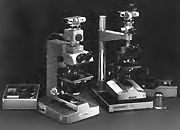 |
The exciting vision of looking at the microscopic world through a microscope can be recorded by the OM-1.OLYMPUS has an outstanding reputation for manufacturing precision microscopes used by scientists throughout the world. Naturally, the OM System includes a variety of microscope adapters, rugged stands, a special shutter to prevent vibration at high magnification, and an automatic exposure mechanism which solves the difficult problem of microscope exposures. |
The Photornicrography Group is designed to expand the photomicrographic world not only into the scientific realm, but also into the creative sphere, so that the photographer's achievements under the microscope can be easily and accurately recorded with his OM-1. <-- PDF File (143k) |
 |
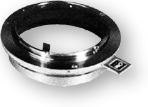 |
Photomicrography Group Accessories * OM-Mount Photomicro Adapter L Connects the OM Body to the microscope for low power magnification. |
* OM-Mount Photomicro Adapter H Connects the OM Body to the lost Photomicrographic System PM- 10, automatic or manual, or Macrophotographic Unit PMT- 35 for high power magnification.
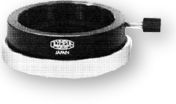 |
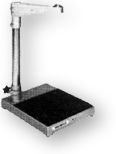 |
* 35mm SLR Camera Adapter PM-D35S Used with OM-Mount Photomicro Adapter H to attach the OM Body to the PM-PBA or PM-PBM |
*
Photomicrographic Supporting Stand PM-PSS This unit is a massive stand virtually
end the major cause of lost photornicrographs at high magnification due to vibration.
Supports the entire camera weight, isolating it from the microscope.
 |
 |
*Eyepiece Adapter PM-ADG-3, PM-ADPF PM-ADF Used to connect a microscope to the OM-Mount Photomicro Adapter L. Each Adapter designates OLYMPUS microscope eyepieces, as follows; PM-ADG- 3 for G eyepieces, PM-ADP for P eyepieces and PM-ADF for NFK (or FK) photo eyepieces. * Light Shield Tube PM-SDM. Designed for use with the Auto Bellows and Objective Lens Mount PM-MTob. Assures excellent images when used with FK photo eyepieces at the bellows length of 111mm (4.4"), free of shutter vibration. * System PM-10-AD Consists of 14 units, including the PM-PBS, PM-CBAD, etc.
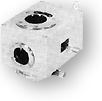 |
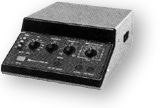 |
* Automatic Exposure Body PM-PBS Automatically determines accurate exposure time.*Automatic Exposure Control Box PM-CBAD Used with the Automatic Exposure Body PM-PBS, to regulate color temperatures control, reciprocity failure, etc. * Manual Photomicrographic System PM-1-M This is a popular manual version of the PM-10, consisting of 8 units. |
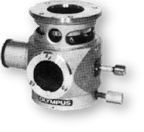 |
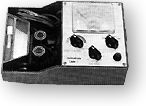 |
* Manual Exposure Body PM-PBM * Photomicrographic Exposure Meter EMM-7 The EMM-7 ensures accurate control of both exposure and color temperature in photomicrography. Provided with exposure and color temperature probes, and color-compensating filters. |
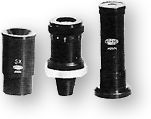 |
* 5X Magnifier For use with the Screen Viewer for magnifying any part of the subject area and focusing accurately.* Focusing Telescope PM-VS For use with objectives 4x and up in conjunction with Automatic or Manual Exposure Body. * Focusing Magnifier FT Used to magnify the image obtained by the Focusing Telescope. |
Case Group The Case Group
includes a large variety of cases that the OM Body and other components fit properly.
Compartment cases are specially made of tough synthetic leather, designed to perfectly
accommodate camera bodies, lenses, motor drive, electronic flash units, etc. The
adjustable partitions can be rearranged in the case to suit the photographer's individual
requirements. Soft, hard and semi-hard cases fit the OM Body and standard lenses,
with a choice of carrying straps.
Case Group Accessories (Other choices)
 |
 |
 |
*
Hard Case for OM Body with IF 1.8 or IF 1.4
*
Hard Case for OM with F 1.2 Accommodates the OM Body with respective standard
lens.
*
Semi-Hard Case for OM Body with F1.8 or F1.4
*
Semi-Hard Case for OM Body with F 1.2e
*
Soft Case for OM Body with F1.8 or F1.4 Accommodates the OM Body with F1.8 or
F1.4 50mm lens.
*Soft
Case for OM Body with F1.2
*Lens
Pouch 100 Made of fine leather to contain a single 100mm lens or smaller lens
or Electronic Flash T20.
*
Lens Pouch 150
*Lens
Pouch 200 A fine leather container for a 200mm telephoto lens, zoom lens, or
smaller. Also holds the main body of Electronic Flash T32.
*
Lens Pouch 300 Accommodates 300mm and 180mm telephoto lenses.
*
Various Shoulder Straps
 |
* Compartment Case S A hard shoulder case with two adjustable partitions. Holds OM Body with two interchangeable lenses and filters, or with Electronic Flash T32 and Bounce Grip.* Camera Holder for Case M Besides the camera holder provided with the Case M, one more camera holder is attachable on the right or left wall of the case as preferred. These holders can hold two camera bodies simultaneously. |
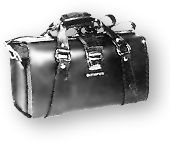 |
* Compartment Case L A hard shoulder or hand-carried case with two adjustable partitions. Holds two OM Bodies, two interchangeable lenses (including 300mm telephoto lens), electronic flash, large format camera, and other equipment. |
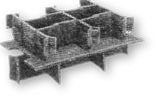 |
* Partitioned Insert When inserted into the Compartment Case L, this unit supports the assembly of the Motor Drive Units. The 250 Film Back 1 and interchangeable lenses can be stored together with the OM Body. |
Mini-FAQ: Note: By the way, some dedicated Olympus users have been maintaining a very good FAQ (52k) - which by far, I would easily rated it as one of the best among all FAQs on camera information in term of quality, accuracy of content, and wealth of technical information. You are encouraged to download a copy for your personal reference. Most of the Q&A below are extracted from the original instruction manual.
Trouble Shooting:
Q: My camera is loaded with film but the rewind knob does not rotate when I transport the film advance lever. Why?
A: The film leader may not be inserted in the film take-up spool and the film is not advancing properly.
Q: The film advance lever cannot be transported. Why?
A: The shutter may be cocked and ready to fire. Try pressing the shutter release button. If this is not the case, your film may be fully exposed. Check the exposure counter. If you feel tension on the film advance lever, DO NOT FORCE IT.
Q: The shutter release button will not move and I can't take the picture. Why?
A: The film advance lever may not have been fully advanced.
Q: The rewind crank will not turn when I try to rewind the film. Why?
A: The rewind release lever may not be set properly. Make sure the lever is rotated until the red dot is opposite the "R".
Q: Why isn't the needle in the viewfinder moving?
A: First, make sure the meter switch lever is set to the "ON" position. If the meter is on, turn the camera towards a bright light source. If the needle still will not move, the battery may not be inserted, may be inserted improperly or may be drained. Replace the battery or insert it properly.
Q: The viewfinder is totally dark and I can't see anything. Why?
A: Make sure you have removed the lens cap. If the cap has been removed, the mirror lockup lever may be in the up position. Return the mirror to its operational position.
Q: The self-timer lever stopped halfway and moves freely. Why?
A: The self-timer lever stopped halfway because the film advance lever has not been transported fully and hence the shutter cannot be released. Turn the start lever counterclockwise, reset the self-timer lever to the desired time, advance the film fully and turn the start lever clockwise to activate.
Q: Can I take the pictures without the motor drive socket cap in place?
A: No, you must replace the cap whenever the motor drive or winder is not attached to the camera's base plate because dust and dirt may get into the socket causing malfunction and light may enter and fog the film.
Q: When I touch the terminal contact of the Accessory Shoe I feel current. Why?
A: This is normal when a side-mounting type flash unit connected to the camera is being turned on. At this point you are not using the accessory shoe so it should be detached, or a cover slide should be inserted.
Q: How can I remove dust from inside the viewfinder?
A: After detaching the focusing screen, blow away any dust with an air blower. Never wipe the surfaces of the screens, prisms, or mirror with cloth or paper.
Q: Why can't I turn the ASA film speed dial?
A: The film speed dial release button must be pressed before the dial can be turned. Once the dial had been set, release the button and make sure the dial has locked into place.
Main Specifications
System: Olympus
OM System.
Code Name: MDS
Model Name: Olympus OM-1
Camera Type: 35mm Single Lens Reflex with focal plane shutter
Film Format: 24mm x 36mm
Lens Mount: Olympus OM Mount, bayonet type, rotation angle 70°, flange
back 46mm, Lens release button at the side of the lens
Minimum Focusing Distance: 45cm (117.72") with all standard lenses.
Shutter: Focal
plane shutter, ring mounted control, with speeds from 1 to 1 /1000 second plus B.
Shutter Release Button: Threaded in the middle to accept any JIS standard Cable
release
Shutter speeds control: via Dial on the lens mount
Hot Shoe Socket: Built-in. Accessory Shoe 4 supplied for OM-1n, Accessory Shoe
1 or "Fixed" Type for original M-1 or OM-1 bodies;
Synchro Socket: As per JIS standard
Flash Contacts: FP-X with switch type contact at synchro socket, X contact at
shoe: With electronic flash (X) 1 sec to 1/60 sec; with class "M" Bulbs
(X) 1 sec to 1/15 sec; with Class "F" Bulbs (X) 1 sec to 1/15 sec; with
focal plane Bulbs (FP) 1/60 sec to 1/1000 sec.
Viewfinder: Silvered coated Pentagonal roof prism type wide-vision finder
shows 97% of actual picture field. Exposure meter needle; Charge/auto check lamp
for electronic flash unit T32, T20 and T10 (OM-1n only).
Viewfinder Magnification: 0.92X at infinity with 50mm lens
Viewfinder Apparent Field of View: 23° 30' & 35°
Focusing Screens: 1-1 Microproism-matte type provided as standard screen.
Interchangeable with any 13 additional screens.
Reflex Mirror: Oversize,
quick return type with mirror Lock-up control. Mirror Cut out: No mirror cut out
in viewfinder regardless of lens in used, from 8mm to 800mm (In the cse of full open
aperture); Mirror used is highly reflective with special coating applied onto reflecting
surface.
Film Loading: Easy loading (Olympus EL system) type by opening rear cover,
which is hinged and provided with a "magic-Lock" (Open when film rewind
knob is pulled up).
Film Advance: (Manual)
Ratchet type film advance. May be advanced in one stroke or several short strokes
for a total of 150° rotation, pre-advance angle 30°. Built-in prevention
against double advance with double exposure override capability. (Motor Drive) With
Motor Drive 1/2 or Winder 1/2 unit attached, single-frame and continuous advance
at speed of 5 frames per second (at exposures above 1/500 sec., with fresh batteries
and at normal temperature and humidity).
Exposure Counter: Progressive
type from "S" (Start) to 36 and "E" (End). Counter automatically
resets to "S" when camera back is opened.
Film Rewinding:
Rewind crank with automatic resetting rewind release lever. Film rewind knob to be
turned 90° towards "R" mark with a red dot. Automaticlly reset when
film is to be advanced.
Metering: Via Lever on top panel, Metering ON/OFF Switch
Exposure Measurement: Two CdS (Cadmium Sulphide) cells located on either side
of the eyepiece provide through -the-lens open aperture light measurement. Zero-method
with needle visible in viewfinder. On-Off Switch located atop camera.
Film Speed Range: ASA
25-1600
Exposure Range: EV1.2-EV16.9
with 55mm f1.2 at ASA100; EV 2-17 (ASA 100 with F1.4 50mm lens); EV2.35 - EV17.35
withh 50mm f1.8 at ASA100.
Insufficient Light Warning: When switched in, the needle jumps down extremely
beyond the lower limit of the range indicator, if light level is too low for proper
metering.
Self-Timer: Lever system with rortation angle 180°. Approx. 4-12 second
delay lever type; Action started via start lever hidden behind Self timer lever.
It can be stopped and reset after actuation.
Camera back: Removable hinge type control by Mounting Pin. Interchangeable
with Recordata Back 1/2 /3 (OM-1n) and 250 Film Back 1/2.
Tripod Socket: As
per JIS standard
Battery used/Power
Source (Metering): 1.35 volt mercury battery JIS H-D type; MR9 (National H_D,
Toshiba H-D; Eveready or UCAR EPX625, Mallory PX625, or equivalent).
Lens Accessory Size:
49mm threaded for F1.8 and F1.4 lenses; 55mm threaded for F1.2 lens
Dimensions & Weights:
Body only: 510g; Body with f/1.8 lens: 136mm x 83mm x 81mm (5.35"
x 3.27" x 3.19"): 680g. (24.0 oz); f/1.4 lens: 136mm x 83mm x 89mm (5.35" x 3.27"
x 3.50"): 740g. (26.1 oz); f/1.2
lens: 136mm x 83mm x 50mm (5.35" x 3.27" x 1.97"): 510g. (18.0
oz)
| previous | Next |
Part 6/6 - Instruction Manual
|
Back | to Index Page
of OM1(n)
|
Back | to Main Index Page of
OM1(n) & OM2(n)
Olympus
OM-1(n): Main
Index Page
(5
Parts)
| Camera
Operations
(6
Parts)
Specifications: HTML | PDF | Main Reference
Map: HTML | PDF (217k)
Olympus
OM-2(n): Main
Index Page
(6
Parts)
| Camera Operations (9 Parts)
Specifications: HTML | PDF (48k) Main Reference
Map: HTML | PDF (203k)
Olympus
OM-2SP: Camera Operations | Other Issues
Specifications: HTML | PDF | Main Reference Map: HTML | PDF
Shared
Resources:
Supplementary
articles:
TTL
Metering,
Depth
of Field,
Shutter
Speed
& Aperture
Motor
Drive and Power Winder: Main Index Page (4 Parts)
Motor Drive 1 | Motor
Drive 2
| Winder 1 | Winder
2
Flash Photography: Main Index Page (4 Parts)
T45 | T32 | T20 | F280 | S20 | Qucik AUTO 310 | QA300,
200, 200S
Macro-Photography: Main Index Page (3 Parts)
Macro Flash Units: T10 Ring Flash, T28 Twin, T28 Single,
T8 Ring Flash
Accessories: Databack 1-4 | Screens | Finder Accessory | Remote | Cases
Zuiko
Lenses: Construction is in progress..
Glossary of Photography
A good external source for used Instruction
Manuals
for various OM SLRs and Accessories.
| Message Board | for
your favourite
Olympus
OM-1(n)
and OM-2(n)
series
SLR Camera models
| Message Board |
for your Zuiko Optics in a shared environment
| Message Board |Specifically
for Dispose or Looking for OM Photographic Equipment
Home - Photography in Malaysia |
Copyright © 2000. leofoo ®. MIR Web Development Team.
Maintainers
for OM Site & Message Board:
Mr. Rick Oleson <rick_oleson@yahoo.com>; Mr. Bruce hamm
<bhamm@magma,ca>; Mr. Simon
Evans <sje@lrc.ruralwales.org>; Mark Dapoz
<md@dementia.org>;
Credit: My old time buddy,
Ahmad
Ikram,
Dr of Rubber Research Institute (RRI), Malaysia
who shares the same passion with me and also lending his OM-1n, OM-4 and the Motor
Drive 1 to me for preparing some images in this site; Mark Dapoz <md@dementia.org>for reminding
some broken links;
Mr Poon of Foto Poon, Ipoh, Mr Richard, Ampang Park, Mr Lim
and Miss Jenny of Foto Edar for their generosity for their OM1(n), OM2n camera
and some Zuiko lenses. Mr Hans van Veluwen for mistakenly using
some content earlier from his OM website; J Sorensen
for providing some useful images to rectify some technical "flaws"; Mr
Gen Holst for helping during the early stages of development of this OM site;
Mr KKLow for some of his earlier images on the OM-1appeared in this website;
Miss Wati and Mirza for helping me
to convert this Operation Manual into a HTML format. Mr MCLau for rectifying
some mistakes made on the earlier preview sites. Site created 'unfortunately' again
with a PowerMac. A personal tribute to the
creator of the OM system and also a site dedicated to all the fans of Olympuses and
Zuiko Optics worldwide. Some of the content
and images appeared in this site were scanned from OM official marketing leaflets,
brochures and instruction manual(s) for educational purposes. Olympus is a registered
tradename of Olympus Optical Inc., Japan.

